Gene-edited polo ponies are galloping into the future, but what does this mean for your dairy farm? CRISPR technology is set to revolutionize agriculture from heat-resistant Holsteins to disease-proof herds. Buckle up, buttercup—this genetic rodeo could make or break your farm. Are you ready to ride the CRISPR wave?
While you were busy worrying about milk prices and mastitis, the future of farming just cantered out of a fancy Argentine polo stable—and it has got “genetic revolution” stamped on its muscular hindquarters.
Picture this: Five frisky foals, prancing around Buenos Aires, looking like they have been hitting the equine gym 24/7. However, these are not your typical blue-blooded ponies. They are the world’s first CRISPR-edited horses, their DNA tweaked faster than you can say “designer genes.”
Before you roll your eyes and mutter “rich people’s playthings,” listen up. Because if scientists can edit horse genes to create the perfect polo player, how long before they’re tinkering with Bessie’s DNA to produce heat-resistant super-cows or disease-proof milk machines?
This is not some far-off science fiction, folks. It is happening right now and is about to stampede into the dairy industry with all the subtlety of a bull in a china shop. We are discussing a potential $100 billion upheaval that could make or break farms worldwide.
So saddle up, buttercup. We are about to ride wildly through the brave new world of gene-edited livestock. From turbocharged polo ponies to cows that laugh in the face of climate change, we will explore what this technology means for your herd, your wallet, and the future of farming itself.
By the time we are done, you will either be chomping at the bit to join the CRISPR revolution… or ready to trade in your milking parlor for a bunker. This might be the most important article you read this decade.
Grab a stiff drink because we are diving deep into the genetic soup that’s about to change everything you thought you knew about dairy farming. Moreover, trust me, those Argentine horses are just the beginning…
Polo Ponies on Steroids? Nope, just good ol’ CRISPR magic!
You know how we are always joking about beefing up our farm animals? Well, some mad scientists in Argentina took that idea and ran with it. Or should I say, galloped with it?
The Muscle-Bound Marvels of Buenos Aires
The five foals prancing around a fancy stable in Buenos are not your average ponies. These little guys are sporting more muscle than a bodybuilder on beach day. How did they do it? Two words: CRISPR editing.
Now, I know what you are thinking. “CRISPR? Isn’t that the thing that makes my lettuce crispy?” Close, but not quite. CRISPR is a gene-editing tool. Think of it like a tiny pair of scissors that can snip and tweak DNA.
The Nitty-Gritty of Gene Tweaking
Here is where it gets interesting. The folks at Kheiron Biotech (fancy name, right?) zeroed in on the MSTN gene. This little guy is the boss of muscle growth. They gave it a bit of a nudge, and voila! Muscle-bound polo ponies.
Dr. Gabriel Vichera, the brains behind this operation, says, “We are not creating sci-fi super-horses here. We are just fast-forwarding what nature would do, like using a microwave instead of waiting for dinner to cook in the sun.”
However, hold your horses (sorry, I could not resist). Before you start dreaming about CRISPR-ing your way to the next Kentucky Derby winner, let us break down what these ponies can do:
- Sprint 15% faster than their non-edited buddies
- Show off muscles that would make Arnold Schwarzenegger jealous
- Moreover, get this—not a drop of artificial DNA in sight!
Not All Sunshine and Hay Bales
Now, I know what you are wondering. “Sounds too good to be true, right?” Well, you might be onto something. Some folks are worried these speed demons might burn out faster than a cheap tractor. Endurance could be an issue, and that is something the eggheads are keeping a close eye on.
Speaking of closed eyes, these ponies are being watched more carefully than a fox in a henhouse. Argentine vets are monitoring every snort, gallop, and tail swish. Safety first, after all!
So what is next? CRISPR Cows?
Here is where things get interesting for us dairy folk. If they can pick up a polo pony, what stops them from creating a super-cow? Imagine a Bessie that could fill up a milk tank faster than you can say “udder madness”!
However, let us not get ahead of ourselves. There is still a lot to learn about this CRISPR business. Who knows? In a few years, we will milk cows that look more like bodybuilders than bovines.
What do you think? Is CRISPR the future of farming, or should we stick to old-fashioned breeding? Either way, the world of agriculture is changing faster than a cat in a dog pound. Better buckle up, folks—it will be a wild ride!
Dairy’s CRISPR Crossroads: Heat, Health, and Herds
Let us chew the cud about something that’s been giving us all-night sweats—and I am not talking about those 2 AM calvings. Climate change, folks. It turns dairy barns into saunas, not the fun kind where you lose water weight. However, hold onto your milk filters because CRISPR might be dairy’s new best friend!
The SLICK Solution: Cows with Built-in A/C?
Do you know how you wish you could slap some air conditioning on your girls on those scorching summer days? Buckle up, buttercup, because that’s basically what this fancy SLICK gene does. It’s like nature’s thermostat, borrowed from those chill Senepol cattle who treat heat waves like a day at the beach.
Now, I know what you are thinking. “Sounds great, but what is the catch?” Well, feast your eyes on these numbers that’ll make your prized Holstein jealous:
| The Hot Stats | What It Means for You |
| Up to 10% higher milk production during heat waves | More milk in the tank when the mercury rises |
| Zero added electricity costs | Your wallet stays as fat as your heifers |
| 100% natural genetic modification | No Frankencows here, just speedy evolution |
| Already green-lit in Brazil and Argentina | Our South American friends are ahead of the game |
However, wait, there is more! (Sorry, I could not resist the infomercial moment there.)
Disease Resistance: CRISPR’s Next Moo-ve
While the FDA is taking its sweet time (seriously, you could raise a heifer faster), CRISPR has another ace up its sleeve: disease resistance. Let’s break it down:
- BVDV currently costs the industry a whopping $1.5-2 billion annually. That is a billion with a ‘B,’ folks.
- We could reduce antibiotic use by 20-30%. Mother Nature (and your vet bill) will thank you.
- The target? Something called the CD46 gene. Do not worry; there will not be a pop quiz.
- Status: Under development. So do not go tossing your medicine cabinet just yet.
Learning from Past Oopsies
Before you get too excited and dream of invincible super-cows, let us stroll down memory lane. Remember the hornless cattle situation? You know, when scientists accidentally created antibiotic-resistant bacteria while trying to save our shins from bruising? Yeah, that was a thing.
Dr. Emily Park, a geneticist at UC Davis, puts it perfectly: “It is like baking. Rush the process, and you’ll end up with a mess. Genetic precision isn’t something you want to speed-date.” More actual words were never spoken, Doc.
So, is CRISPR perfect? Nope. However, neither was artificial insemination when your granddad first heard about it. (Can you imagine that conversation? “You want to put WHAT, WHERE?”)
Here is the million-dollar question: With milk prices in limbo (how low can they go?). Can we afford not to explore this? It is like when you hesitated about buying that new milking parlor—sometimes, you must spend money to make money.
What do you think? Are you ready to ride the CRISPR wave or stick with old-school genetics for now? Either way, one thing is for sure—the future of dairy farming is looking more sci-fi than ever. However, as long as we are not milking robots, we are still in business!
The Regulatory Rodeo: Wrangling CRISPR Rules from Buenos Aires to Brussels
All right, folks, grab your lasso because we are about to wrangle the wildest beast in the barn: CRISPR regulations. Have you ever tried explaining TikTok to your grandma? This is like that but with more bureaucrats and more significant consequences. Buckle up, buttercup—this ride is bumpier than a hay wagon on a rocky field!
A Tale of Two Systems: The Regulation Tango
Argentina is doing the CRISPR cha-cha on one side of the dance floor as if it is going out of style. Their motto? “If it is not foreign DNA, it is not GMO!” CONABIA (their biotech regulatory body, not a new coffee brand) is practically high-fiving farmers left and right.
Now, swing your partner around to the European Union. These folks are doing a cautious waltz, eyeing CRISPR like a bull in a china shop. Their approach? “Hold my organic, locally sourced, artisanal beer while I regulate everything more intensely than a helicopter parent at a playground.”
However, here is the million-dollar question: What happens when these two very different dance styles collide on the global stage?
The Export Anxiety Express: All Aboard!
Let me introduce you to Luisa Moreno, an Argentine dairy co-op manager who is probably chugging antacids like they are going out of style. She says, “You know what keeps me up at night? We’re investing millions in SLICK cattle, but Europe might decide tomorrow that our milk is more controversial than pineapple on pizza.”
Talk about a high-stakes game of genetic roulette! It is like betting the farm on a cow that might or might not be allowed to compete in the show ring. Yikes!
Uncle Sam Joins the Dance: The AGRI-TECH Act Shuffle
Now, let us move on to the good ol’ US of A, where the 2023 AGRI-TECH Act is causing more farmer head-scratching than a case of lice in the herd. Here’s the lowdown:
| The Trust Gap | What It Means |
| 65% of dairy farmers say: “This bill needs more clarity.” | Farmers are more confused than a cow on AstroTurf |
| Proposed subsidies: ✅ | Uncle Sam’s waving some dollar bills |
| Actual clarity: 🤷♂️ | Clear as mud, folks |
| Farmer confidence | Lower than a snake’s belly in a wagon rut |
Now, I know what you are thinking. “But what does this mean for me and my herd?” Please pull up a hay bale and let us chew on it for a minute.
First, if you are exporting milk or considering it, keep one eye on the regulatory landscape and the other on your CRISPR cows. It is like chess, but the board keeps changing, and some pieces explode.
Secondly, while the U.S. is trying to get its act together with the AGRI-TECH bill, it is about as clear as a muddy pasture after a rainstorm. Subsidies sound nice, but without clarity, it is like being handed a blank check you cannot cash.
So, what should a savvy farmer do? Staying informed is your best bet. Keep your ear to the ground (but not too close; you do not want to get run over by the regulatory tractor). Network with other farmers, join industry groups, and do not be afraid to tell your representative about the need for clear, science-based regulations.
Remember, folks, the only constant in farming is change. Moreover, CRISPR regulations are changing faster than a cow’s mood at milking time. However, if we can handle 4 AM wake-up calls and temperamental tractors, we can handle this, too, right?
Remember: In the Wild West of CRISPR regulations, it pays to be the cowboy (or cowgirl) with the fastest draw and the sharpest mind. Yeehaw, and may the regulatory odds be ever in your favor!
Consumer Trust: The “Natural” Dilemma—or, How I Learned to Stop Worrying and Love the Gene
You know how your cows always seem to be on opposite sides of the fence? Well, consumers are like that regarding CRISPR and gene editing. Check out these numbers:
| Consumer Group | Their Take on CRISPR |
| 52% of Americans | “CRISPR? If it helps Bessie, we’re cautiously optimistic!” |
| 33% of Europeans | “We need more information before deciding.” |
| Marketing departments | Nervous sweating intensifies |
(IFIC & Eurobarometer, 2023)
I do not know about you, but those numbers are more mixed than a herd of Holsteins and Jerseys at a square dance.
When Organic Meets Atomic: The Certified Conundrum
Speaking of mixed feelings, let me introduce you to Clara Dixon, a Vermont farmer who probably has more wrinkles from worrying than sun exposure. She says, “Twelve years. That is how long it took to get our organic certification. And now they want me to consider genetic editing? That is a big decision that needs careful thought” (Dixon, 2023).
Can you blame her? Getting that organic certification is more complicated than teaching a cow to tap dance. It’s like… Have you ever tried to explain to a city slicker why you cannot just “turn off” the cows for a day? Yeah, it is like that.
Plot Twist: Silicon Valley Wants a Slice of the Cheese
Here comes the curveball: while we are all scratching our heads over CRISPR, some tech whizzes in Silicon Valley are busy playing Dr. Frankenstein with bacteria. Companies like Perfect Day are engineering microbes to make milk proteins. I know. It is enough to cause a dairy cow to have an identity crisis!
Check out these utterly ridiculous numbers:
- Market value: $2.1 billion (that’s “billion” with a “you have got to be kidding me”)
- Product: Lactose-free dairy proteins (because regular milk was too mainstream)
- Method: Genetically modified microbes (yep, we are milking bacteria now)
- Traditional farmers’ reaction: 😳 (that is the official emoji for “What in tarnation?”)
The Reality Check: Adapt or Get Left in the Dust
Here’s the deal, folks. While we all argue over what “natural” means faster than two bulls fighting over a heifer, science is moving forward at breakneck speed. Remember when artificial insemination was considered cutting-edge? It is about as controversial as using a tractor instead of a horse.
So, here is the million-dollar question (and trust me, with these new technologies, we are talking way more than a million dollars): Will we adapt to them, or will we be left behind faster than last year’s silage?
Look, I get it. Change is scarier than a bull with a bee in its bonnet. However, here is some food for thought: What if CRISPR could help us produce more milk with fewer resources? What if it could make our cows healthier and happier? Heck, what if it could make them tap dance? (Okay, maybe not that last one.)
The point is that we need to do some serious thinking. Will we be the farmers who embrace the future or those left in the dust? Let me tell you, dust is coming whether we like it or not.
So, what do you think? Are you ready to ride the CRISPR wave, or will you stick to your guns and hope “natural” comes back in style? Either way, one thing is for sure—the future of dairy farming will be one wild ride. Better hang on to your overalls!
David vs. Goliath: When Small Farms Face Big Tech
Grab your coffee (or maybe something more substantial) because we are about to dive into the wild world of CRISPR economics. You know, the stuff that’ll make your accountant’s head spin faster than a calf chasing its tail.
The Price Tag That’ll Make Your Milk Curdle
Remember when you thought that fancy new milking parlor was expensive? Hold onto your overalls because CRISPR’s about to make that look like chump change. Let’s break it down:
| CRISPR Cost Breakdown | Price |
| One CRISPR-edited embryo | $5,000-$10,000 |
| Licensing fees | 5-10% of offspring revenue |
| Your remaining sanity | Priceless |
(Agri-Pulse, 2023)
I know. You probably think, “For that price, this calf better milk itself and do my taxes!” However, wait, there is more!
When Grandpa’s Math Doesn’t Add Up
Jake Larson, a Wisconsin dairy farmer (and probably the guy with the most stressed-out cows in the Midwest right now), puts it this way: “My granddad traded three heifers for his first tractor. Today? That same deal would barely cover the cost of gene-editing technology for a single calf!” (Larson, 2023)
Geez, Jake, way to make us all feel old and poor simultaneously!
The Knowledge Gap Grand Canyon
Here is a fun fact that’ll keep you up at night (as if 2 AM calvings were not enough): only 15% of U.S. dairy farmers say they fully understand gene editing. That’s fewer people than can explain why cats always land on their feet! (Cornell University, 2023)
Let us break down this understanding gap:
- 15% of farmers: “CRISPR? Oh yeah, I have got that down pat!”
- 60% of farmers: “CRISPR? Is that like a new kind of cheese?”
- The rest of us: “I would rather wrestle a bull than decode genetic jargon!”
The Real-World Math
All right, let us put on our farmer hats (as if we ever take them off) and break this down:
- Sell one top heifer ➡️ Buy one CRISPR embryo
- Pay potential gene royalties ➡️ Because DNA has better lawyers than we do
- Hope the investment pays off ➡️ While big farms are already swimming in CRISPR milk
It is like playing Monopoly, but instead of Park Place, you buy gene sequences. Moreover, trust me, the “Get Out of Debt Free” card is harder to find than a quiet moment during calving season.
The Million-Dollar Questions
Now, I know what you are thinking. “Can small farms even compete in this genetic arms race?” Well, that is the million-dollar question (or, should I say, the million-dollar embryo question?).
Moreover, here is another head-scratcher: Will we soon need Ph.D.s to be farmers? Let me tell you, trying to understand CRISPR makes advanced calculus look like counting cows.
Is anyone else missing the days when our biggest tech worry was whether the radio would work in the milk house? No, is it just me?
Look, I am not saying CRISPR is all doom and gloom. Its potential is more significant than that of a prize-winning Holstein. However, for us small farmers, it is like trying to keep up with the Joneses when they bought a genetic modification lab.
So, what does a small farmer do? We could always band together, pool resources, and afford half a CRISPR embryo. Alternatively, we could stick to our guns, focus on what we do best, and hope that “artisanal, non-genetically modified milk” becomes the next big thing.
Either way, one thing’s for sure: the future of farming is looking more sci-fi than Old MacDonald ever imagined. E-I-E-I… oh boy.
What do you think? Are you ready to jump into the CRISPR pool or stick with good old-fashioned breeding? Whatever you choose, remember: in farming, the only constant is change. And maybe manure. Manure.
The Road Ahead: Editing with Ethics (and Maybe a Tiny Quantity of Excitement!)
We have been doom-and-glooming about this, but guess what? There is a silver lining in this CRISPR cloud, and it is shinier than a freshly polished milk tank!
The “Maybe We Won’t All Go Broke” Game Plan
Let us talk about three ways we are making this CRISPR thing work without selling the farm (literally):
- Blockchain Brilliance (Because apparently, milk needs a digital passport now)
- Ever heard of DairyTrace? It is like Ancestry.com for your milk!
- Tracks CRISPR milk from cow to consumer
- Consumers can scan QR codes to see where their milk came from (and probably what the cow had for breakfast)
- Finally, a blockchain thing that doesn’t involve losing your life savings to crypto! (DairyTrace, 2023)
- Brazil’s “Open Access” Move (Robin Hood, but make it genetic)
- “Open CRISPR” program is sharing gene patents like grandma shares cookies
- Small farmers can access specific non-patented genes for reduced fees
- Big Biotech companies are scratching their heads so hard that they might need helmets
- Australia’s Double Whammy (Why solve one problem when you can tackle two?)
- Heat-resistant cattle research (for when global warming turns your pasture into a sauna)
- Methane-reducing feed additives (making cows eco-friendly, one burp at a time)
- Addressing climate change? PRICELESS!
Now, I know what you are thinking. “This all sounds great, but is it ethical? Are we playing God here?” Well, let us see what the eggheads have to say about that.
The Quote That’ll Make You Go “Hmmm…”
Dr. Sanjay Patel from MIT (yeah, that MIT) puts it this way: “Look, we are not playing God here—we are trying to adapt to a changing world. Climate change is not exactly waiting for us to finish the debate.” (Patel, 2023)
Well, when you put it that way, Doc…
Real Talk: The Three-Legged Race to Tomorrow
Think of it like this: We have science sprinting ahead like a heifer who just broke through the fence, ethics trying to keep up like an out-of-shape farmer, and regular folks just trying not to face-plant in the mud. However, here’s the kicker—we might be figuring this out!
The Tech-Savvy Farmer’s Checklist:
- Morning: Check milk production (and maybe Instagram your prettiest cow)
- Afternoon: Monitor herd data (while trying to remember what all those numbers mean)
- Evening: Update digital records (and wonder when farming turned into data entry)
- Before bed: Remember when farming just meant farming? (Pepperidge Farm remembers.)
Look, I get it. This all sounds more complicated than explaining artificial insemination to your city cousin. However, here is the thing—we are farmers. We adapt. We overcome. We have been doing it since the first caveman looked at a wild aurochs and thought, “I bet I could milk that.”
So, what do you say? Are you ready to ride this CRISPR wave into the future? Or will you stick to your guns and hope that “artisanal, non-genetically modified milk” becomes the next big thing? (Spoiler alert: It might!)
Either way, one thing is for sure—the future of farming will be one wild ride. So buckle up, buttercup. It will be more exciting than a bull in a china shop!
If you will excuse me, I must explain to my cows why they must start learning computer science. Wish me luck!
The Bottom Line
CRISPR is not just coming—it is here, stomping through the industry like a bull in a china shop. From heat-resistant Holsteins to disease-proof herds, this technology is reshaping dairy farming faster than you can say “automated milking system.”
The price tag might make you wince harder than stepping in a fresh cow pie. The regulations? It is more tangled than a hay baler on a bad day. Moreover, do not even start on consumer perceptions—they change quicker than a cow’s mood during the fly season.
However, here is the kicker: We cannot afford to sit this out. Climate change is breathing down our necks like an impatient heifer at feeding time. Disease resistance could slash our antibiotic use, making our herds and bottom lines healthier. Moreover, let us face it: if we do not jump on this CRISPR train, we might find ourselves left behind at the station, watching lab-grown “milk” take over the market.
So, what does a savvy farmer do?
- Stay informed. Knowledge is power; in this case, it might be the difference between thriving and barely surviving.
- Be adaptable. Our ancestors went from hand-milking to machines. We can handle this.
- Collaborate. Pool resources and share knowledge. We are stronger together than alone in this genetic rodeo.
- Keep your ethics strong and your WiFi stronger. The future of farming needs both.
Remember, we are not just dairy farmers. We are innovators, problem-solvers, and the backbone of the agricultural world. CRISPR is just another challenge; if there is one thing farmers know how to do, it is overcome challenges.
The future of dairy farming is here, folks. It is complex, it is controversial, and it is utterly fascinating. So grab your gene-edited bull by the horns, and let us ride this CRISPR wave into a brighter, more productive future.
After all, who knows? Maybe in a few years, we will laugh about how we ever managed without our heat-resistant, disease-proof, methane-light super cows.
If you excuse me, I need to explain to my herd why they need to start practicing their computer skills. These cows are not going to code themselves… yet.
Key Takeaways
- CRISPR gene editing, first used in Argentine polo horses, is poised to revolutionize dairy farming.
- Potential benefits include heat-resistant cows (10% higher milk production in heat waves) and disease resistance (20-30% reduction in antibiotic use).
- CRISPR technology could address climate change challenges and improve farm profitability.
- High costs ($5,000-$10,000 per embryo) and licensing fees (5-10% of offspring revenue) may be barriers for small farms.
- Regulatory landscapes vary globally, with Argentina embracing CRISPR while the EU remains cautious.
- Consumer perceptions are mixed: 52% of Americans are cautiously optimistic, while 33% of Europeans want more information.
- Alternative dairy technologies (like lab-grown proteins) are emerging as potential competitors.
- Farmers must stay informed, adapt, and consider collaborating to leverage CRISPR technology.
- Ethical considerations and potential unintended consequences (like the antibiotic-resistant bacteria in hornless cattle) must be carefully monitored.
- The dairy industry faces a crucial decision: adapt to CRISPR technology or risk being left behind.
Summary
Gene-edited polo horses in Argentina have sparked a revolution that’s galloping straight for the dairy industry. CRISPR technology allowed scientists to create muscular, faster equine athletes and could soon create heat-resistant, disease-proof super cows. This is not science gene editing; it is happening now, potentially reshaping the $100 billion dairy market. CRISPR promises solutions to some of dairy farming’s biggest challenges, from boosting milk production during heat waves to slashing antibiotic use. However, it also brings hefty price tags, regulatory hurdles, and ethical questions. As Brazil opens access to gene patents and Australia tackles climate change with CRISPR, U.S. farmers must jump on the gene-editing bandwagon or risk being left in the dust. The future of dairy farming is here, and it is more sci-fi than Old MacDonald ever imagined.
Learn more:
- Gene Editing: A Game Changer for Dairy Cattle Breeding
- Genome Editing in Cattle: Recent Developments and Future Prospects
- The Future of Cattle Breeding: Advanced Reproductive Technologies
 Join the Revolution!
Join the Revolution!
Bullvine Daily is your essential e-zine for staying ahead in the dairy industry. With over 30,000 subscribers, we bring you the week’s top news, helping you manage tasks efficiently. Stay informed about milk production, tech adoption, and more, so you can concentrate on your dairy operations.







 Join the Revolution!
Join the Revolution!

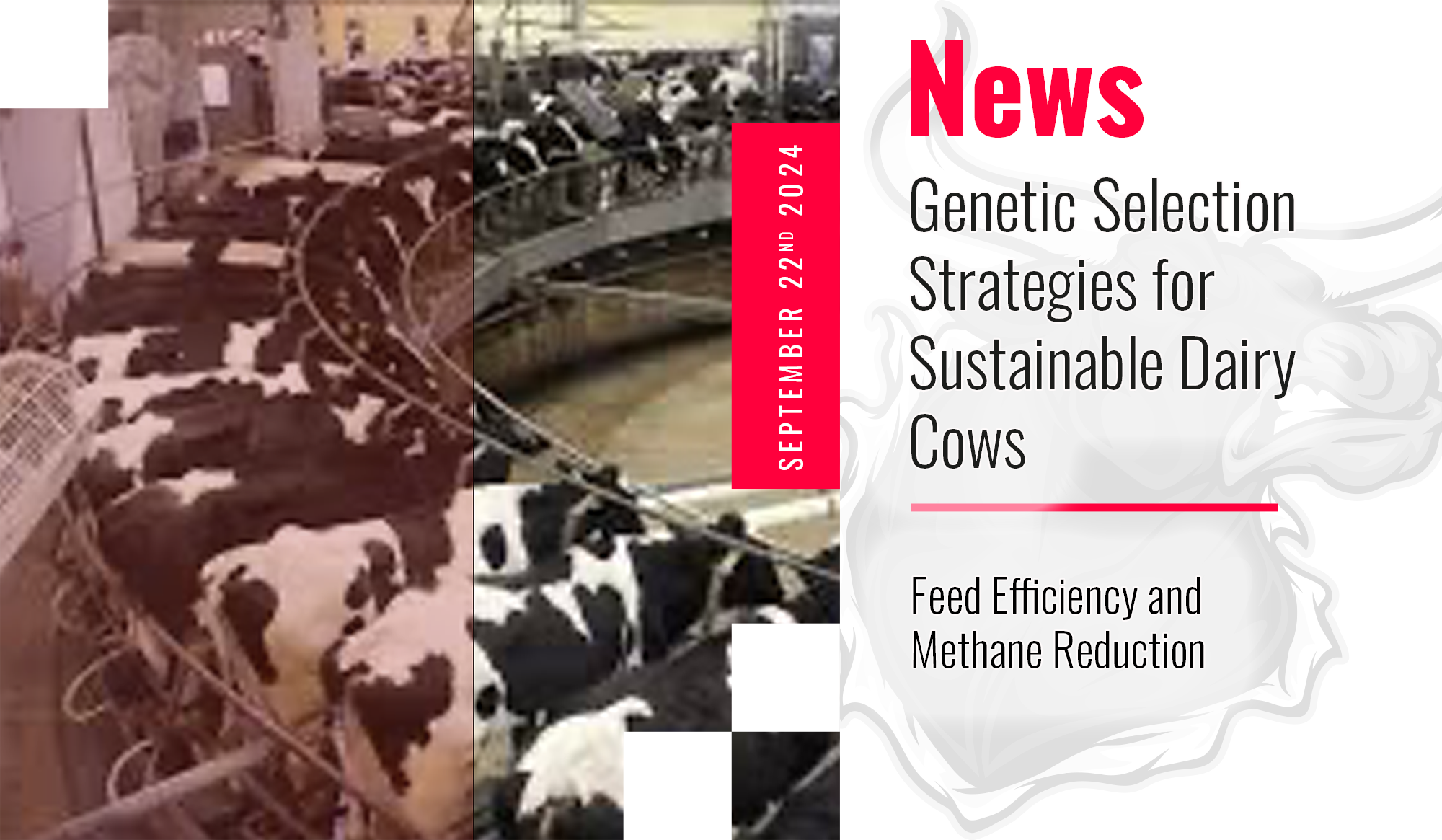
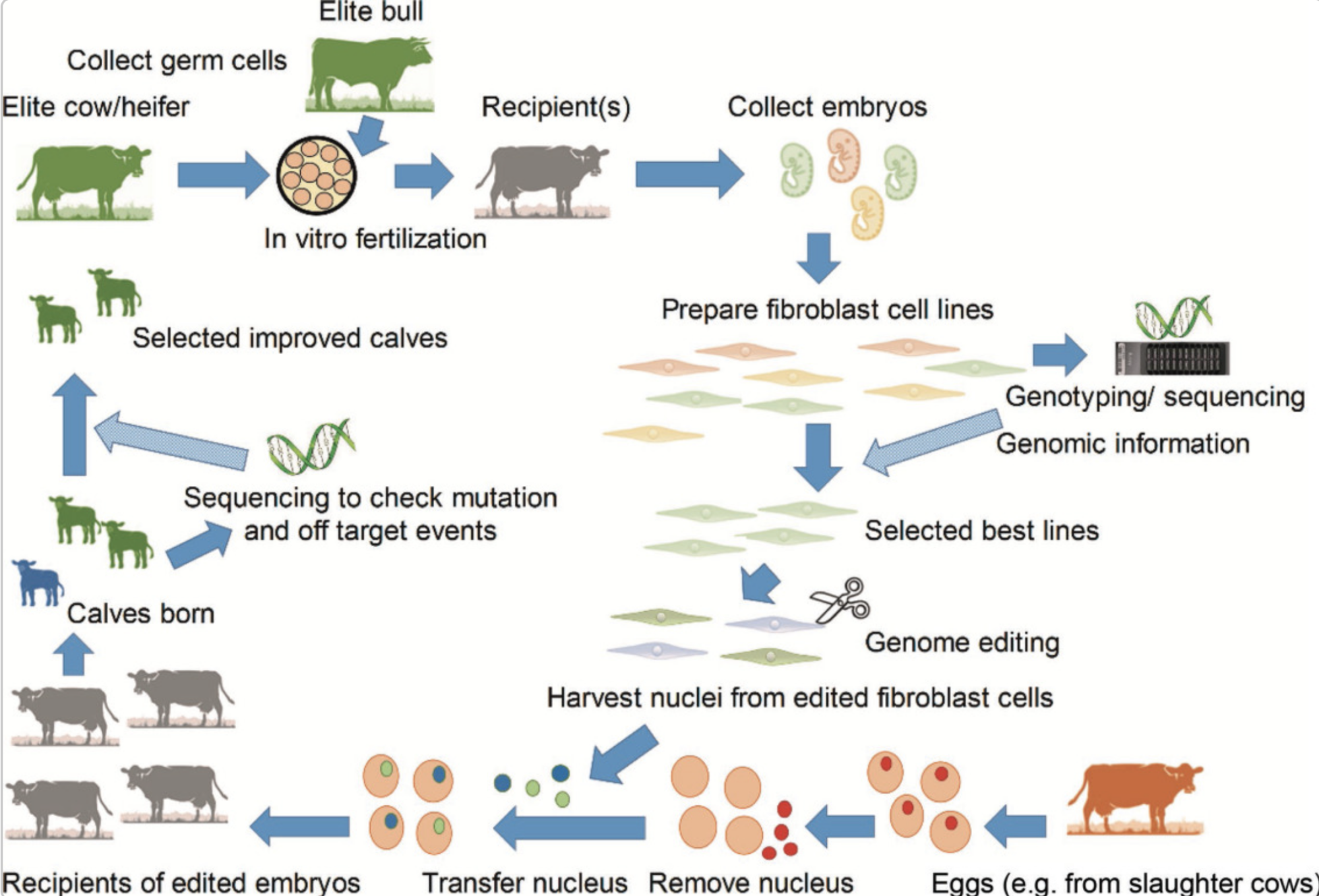

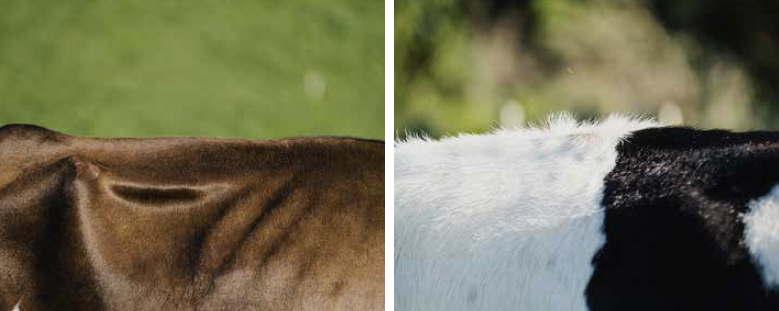


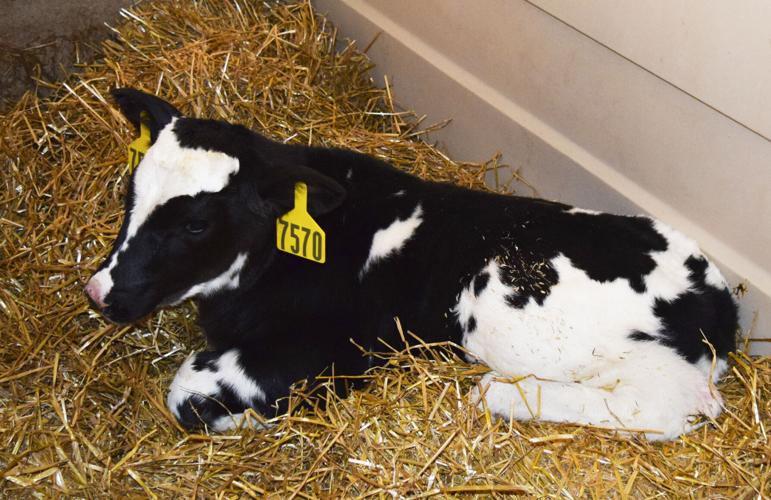
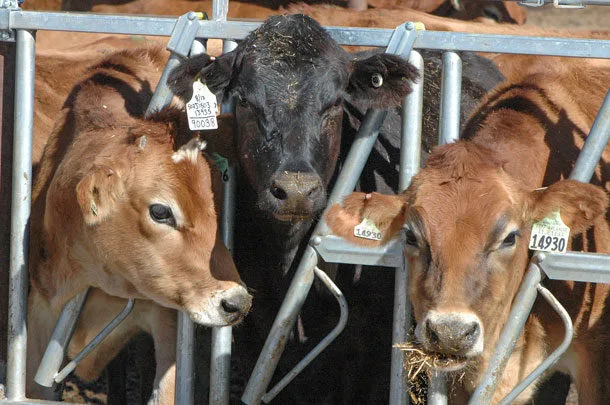
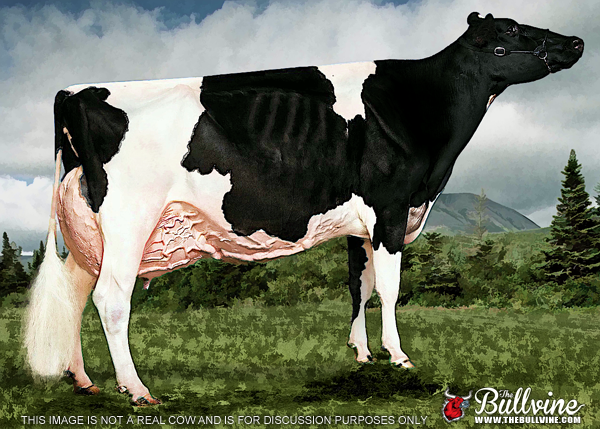
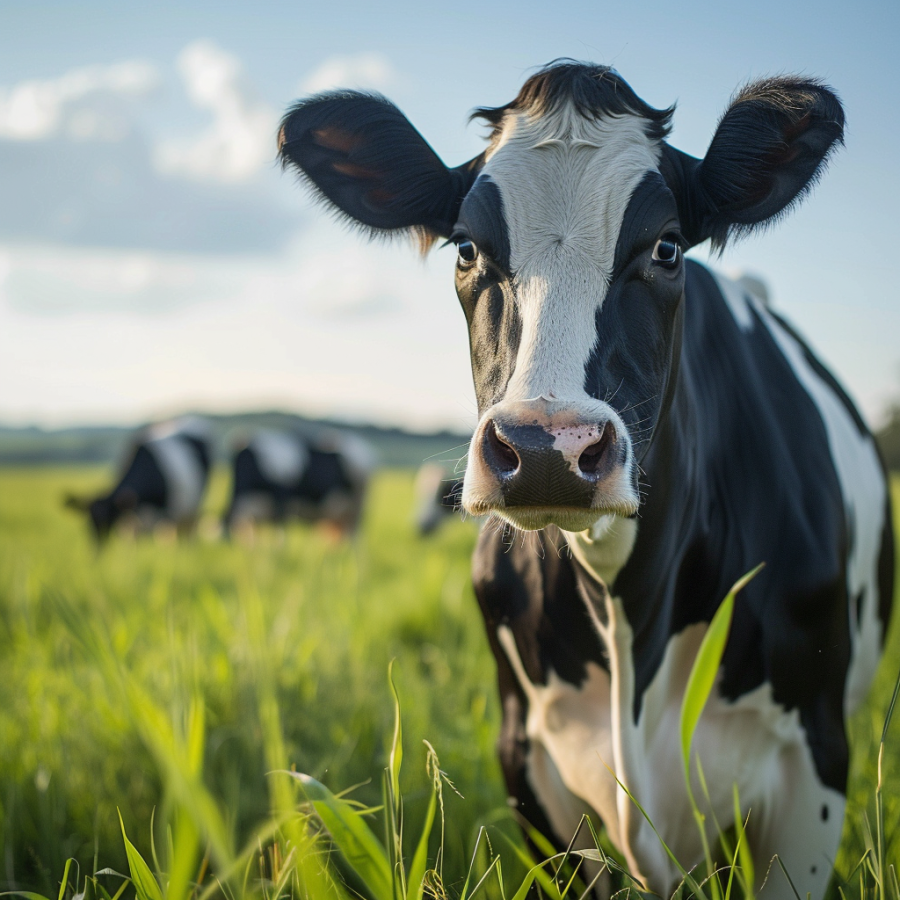

 Let us show you…
Let us show you… Intense genetic selection can have an unintended side effect — the loss of genetic diversity.
Intense genetic selection can have an unintended side effect — the loss of genetic diversity. This week’s release of Australian Breeding Values (ABVs) by DataGene has highlighted a trend that has seen more, young Holstein bulls of high quality coming through the ranks over the past year.
This week’s release of Australian Breeding Values (ABVs) by DataGene has highlighted a trend that has seen more, young Holstein bulls of high quality coming through the ranks over the past year. Kenya plans to use embryo transfer technology in order to improve its dairy cattle breeds, the government agricultural agency said on Thursday.
Kenya plans to use embryo transfer technology in order to improve its dairy cattle breeds, the government agricultural agency said on Thursday. At the University of Guelph, researchers are tapping into the power of genomics to breed dairy cattle that are more feed-efficient and produce less methane, while still maintaining the high productivity, health and fertility of dairy cows, thereby getting their wish in the form of a huge database to support the project.
At the University of Guelph, researchers are tapping into the power of genomics to breed dairy cattle that are more feed-efficient and produce less methane, while still maintaining the high productivity, health and fertility of dairy cows, thereby getting their wish in the form of a huge database to support the project.



